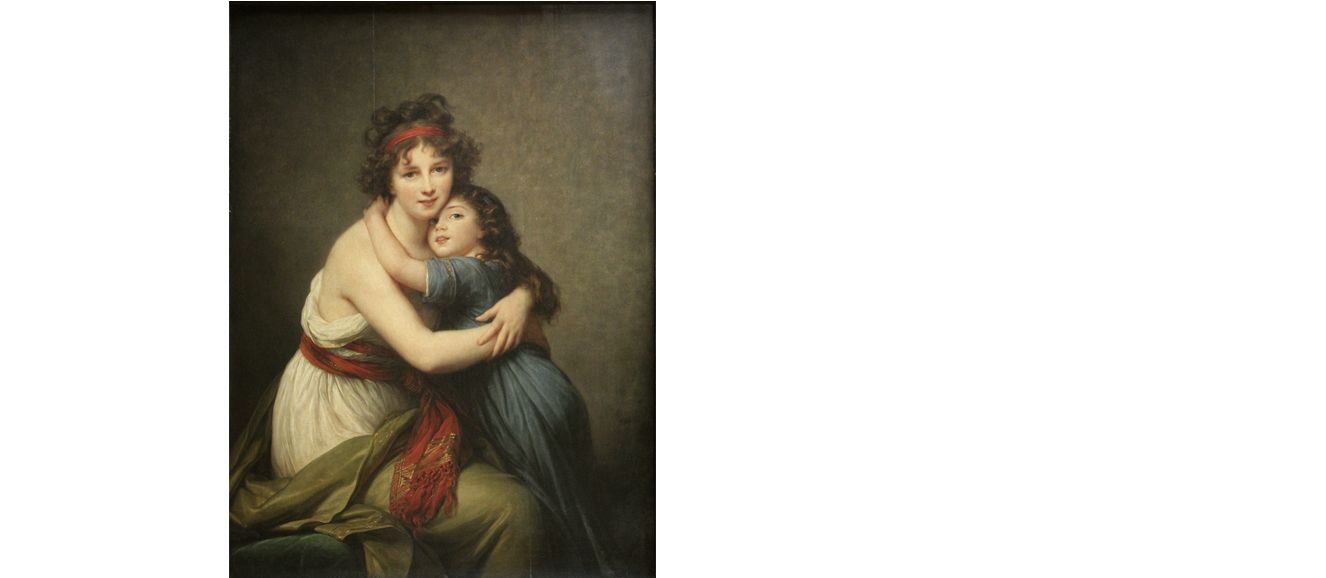When Ann Sutherland Harris and Linda Nochlin created their landmark exhibit “Women Artists: 1550-1950” in 1976, they included the 18th-century French portraitist Elisabeth Vigée Le Brun.
How could they not? She remains one of the great 18th-century artists, the great woman artists, the great artists. Her sympathy for her sitters, who constituted the glitterati of late 18th- and early 19th-century Europe; her skill in capturing the turn of a graceful figure, the glint of a satin bow make her a fitting subject for a retrospective.
But oddly enough, there has not been a retrospective of her work — until now. “Vigée Le Brun: Woman Artist in Revolutionary France” — featuring 80 paintings and pastels from museums and private collections at home and abroad — graces The Metropolitan Museum of Art Feb. 15 through May 15, allowing viewers to enjoy a belated Valentine’s Day and an early Mother’s Day there.
That is perhaps no coincidence. Vigée Le Brun captured queens and counts alike. The doomed Marie Antoinette was an early patron who used her influence to get the prodigious Vigée Le Brun into the Académie Royale de Peinture et de Sculpture in 1783. (This in an age in which women were not ordinarily admitted to art schools.)
But among her finest works was a group of sensitive self-portraits that featured her only child, Jeanne Julie Louise, known as Julie. In one of her best-known paintings, “Madame Vigée Le Brun and Her Daughter” (1789, oil on canvas, Musée du Louvre), Julie clings charmingly to her mother as she smiles at the viewer, enveloped in her mother’s arms. It’s an image beloved by those who cherish the tender intimacy of the mother-daughter bond. Although this painting does not appear in The Met show, there are allegorical paintings of Julie — as a vulnerable bather (1792) and the goddess Flora (circa 1799) — that capture a mother’s pride and affection.
These allegorical images — which include “The Prince Henryk Lubomirski as Love of Glory” (1788, oil on wood) — contrast sharply with the plumed, ribboned, bonneted and gowned portraits of the rich and famous who were Vigée Le Brun’s clientele almost immediately. Like most women artists of a certain era — Artemisia Gentileschi comes to mind — Vigée Le Brun owed her talent and its early nurturing to her father, the portraitist and fan painter Louis Vigée. As a convent school girl, she doodled in her notebooks. Though her mother would marry a wealthy jeweler after her father died when she was 12, Vigée Le Brun would often augment his miserliness with her earnings from portraiture. Soon she was attracting what we would call a celebrity clientele and the encouragement of artists like Jean-Baptiste Greuze.
In 1776, she married Jean-Baptiste-Pierre Le Brun, the great-grandnephew of the artist Charles Le Brun, who had been the Apelles to Louis XIV’s Alexander the Great. Still, it was not Vigée Le Brun’s husband but Marie Antoinette who made possible her entrée into the Académie Royale. It would prove to be a dangerous association in Revolutionary France, and, after the arrest of Antoinette and her husband, Louis XVI, Vigée Le Brun fled Paris with daughter Julie. Though she was repatriated under Napoleon, Vigée Le Brun traveled to Germany, Italy, Russia and England, where she would paint everyone from the granddaughters of Catherine the Great — the Grand Duchesses Alexandra and Elena Pavlovna — to Lord Byron.
At home or abroad, painting remained a constant. Indeed, after she died in Paris at the age of 87, her body was interred in the Cimetière de Louveciennes, not far from her former home. As per her will, the headstone contained a relief of a palette and brushes.
In life and in death, she remained an artist.





